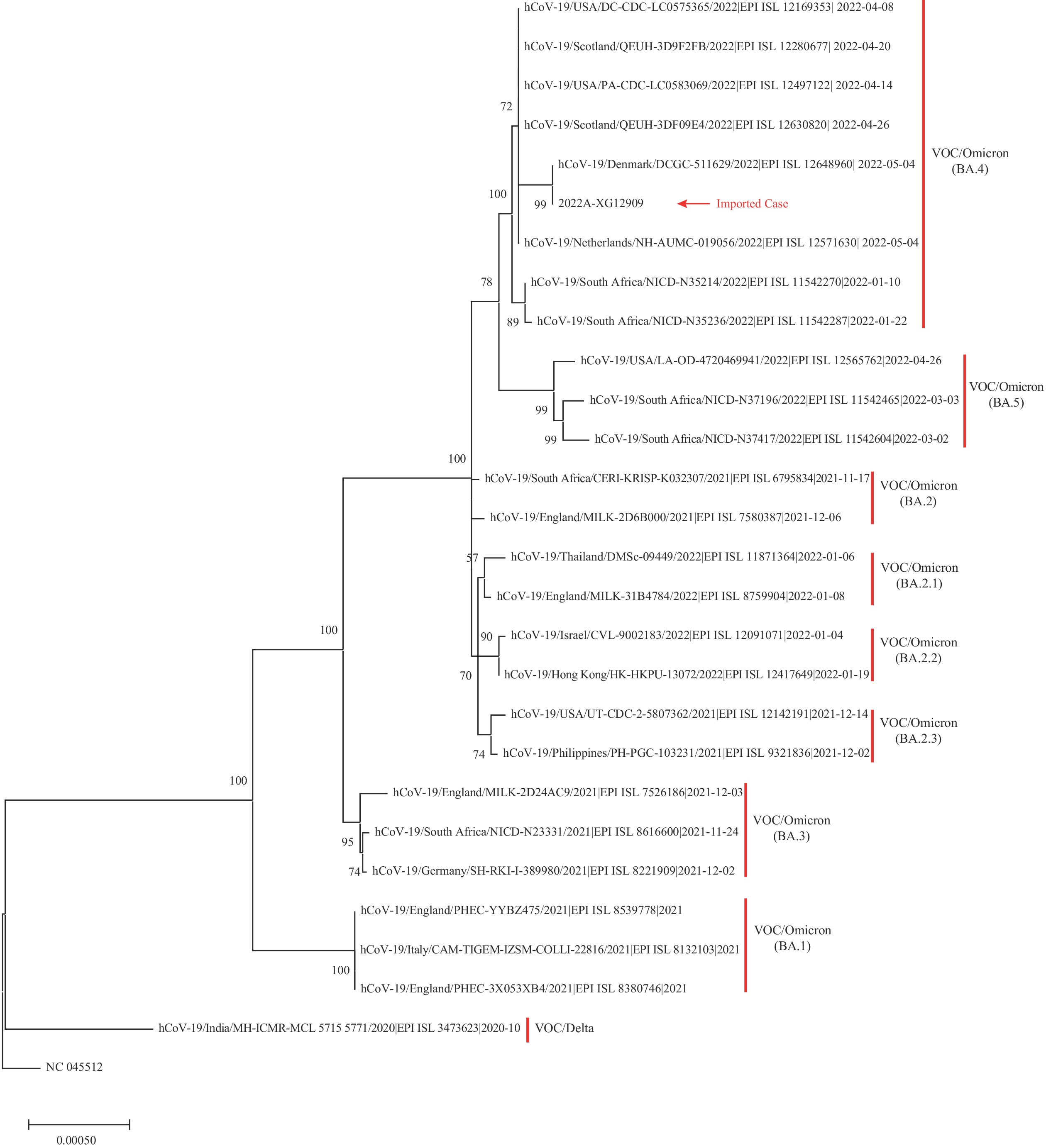-
On April 29, 2022, a flight arrived at Baiyun International Airport, Guangzhou City, Guangdong Province, and departed from Amsterdam Schiphol Airport, Netherlands. After the first test of severe acute respiratory syndrome coronavirus 2 (SARS-CoV-2) nucleic acid at the Baiyun International Airport, all passengers were admitted to a quarantine hotel for a routine 14-day medical observation. On April 30, one of the passengers (a 20-year-old Chinese female) was reported positive for coronavirus disease 2019 (COVID-19), and then a nasopharyngeal swab sample was immediately retested on May 1 and reported positive. The patient was fully vaccinated against COVID-19 and completed 14 days of quarantine before flying to China. She denied any history of exposure to COVID-19 cases. After diagnosis, the patient was sent to Foshan Fourth People’s Hospital for treatment.
On May 4, 2022, the viral genomic sequence of the patient was obtained using the Illumina MiniSeq platform (Illumina, San Diego, CA, USA), and genotyping results showed that the genome belonged to the Omicron/variant of concern (VOC) sublineage BA.4, with a total of 30 amino acid mutations (V3G, T19I, A27S, G142D, V213G, G339D, S371F, S373P, S375F, T376A, D405N, R408S, K417N, N440K, L452R, S477N, T478K, E484A, F486V, Q498R, N501Y, Y505H, D614G, H655Y, N679K, P681H, N764K, D796Y, Q954H, N969K) and 5 deletions (L24del, P25del, P26del, H69del, V70del) in the spike protein gene. The phylogenetic tree indicates that the sequenced BA.4 has high similarity to the genome detected in Denmark on May 4, 2022 (GISAID: EPI_ISL_12648960) (Figure 1). The sequence has been deposited in the National Genomics Data Center (under the accession number WGS025540).
 Figure 1.
Figure 1.Phylogenetic tree based on the full-length genome sequences of the COVID-19 Omicron sublineage.
Note: The Guangdong Province imported VOC/Omicron (BA.4) variant is indicated with a red arrow. The other Omicron sublineages are indicated on the right side and marked with vertical bars.
Abbreviation: COVID-19=coronavirus disease 2019; VOC=variant of concern.
On May 4, 2022, the World Health Organization reminded to closely monitor Omicron BA.4 subvariants (1). BA.4 is driving the upsurge in South Africa and has rapidly replaced BA.2, with over 50% of sequenced cases since the first week of April 2022 (2). Compared to BA.2, the BA.4 subvariants also showed stronger immune escape to the plasma of 3-dose vaccinees, even vaccinated BA.1 convalescent plasma (3-4). Cases of BA.4 infection have been reported in at least 20 countries, mainly from South Africa (62.39%) (5-6). Researchers are focusing on this subvariant and trying to learn more.
HTML
| Citation: |




 Download:
Download:




